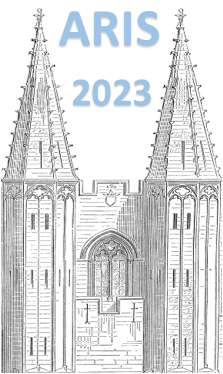Orateur
Description
The OEDO-SHARAQ system at RIBF in RIKEN was primarily started to promote high-resolution nuclear spectroscopy with radioactive isotope (RI) beams. It was recently upgraded as the world's first beamline characterized by the energy-degrading of RI beams with a followed magnetic spectrometer for fragment analysis.
The high-resolution property of the system was fully demonstrated in the direct atomic mass measurements by using the TOF-B$\rho$ method. We recently reported the atomic masses of $^{55-57}$Ca and $^{58-62}$Ti for the first time using the OEDO-SHARAQ system in RIBF [1,2]. In this talk we would like to discuss the shell evolution in the neutron $p_{1/2}$, $f_{5/2}$ and $g_{9/2}$ orbitals in this region and the similarities or differences to a region around $^{24}$O and $^{32}$Mg.
The energy-degrading operation of the system began experiments in the spring of 2017. This beamline was designed to decelerate the intermediate-energy RI beam produced by the BigRIPS separator down to 10-50 MeV/u. A radio-frequency electric ion-optical element is installed in the beamline, which provides unique ion optics of time-dependent beam focusing [3]. Additionally, an angle-tunable wedge-shaped energy degrader is utilized for the compression of RI-beam energy [4]. The combination of these key equipment enables OEDO to achieve simultaneously good beam focusing and energy compression on the secondary target. Thus, the RI beams provided by the OEDO-SHARAQ system widely cover the energy range for pre-compound, pre-equilibrium, and/or direct reactions.
After OEDO's construction, we performed measurements utilizing such reaction mechanisms. Recent achievements include low-energy cross-section studies of spallation reactions on RIs, especially long-lived fission products (LLFPs) $^{93}$Zr and $^{107}$Pd. The results report the lowest beam energy measurements for these LLFPs and are essential when designing reduction schemes for nuclear waste management [5]. Also, experimental studies on the astrophysical neutron-capture process were done. Amplitudes of neutron-capture processes are essential for nucleosynthesis in explosive sites. OEDO-SHARAQ provides the experimental opportunity to determine survival probabilities from unbound states via a pre-compound neutron-transfer reaction. We recently measured $^{130}$Sn(d,p) and $^{56}$Ni(d,p) reactions to study the neutron captures in $r$- and $\nu p$-processes, respectively. Data analyses are ongoing. We will show here tentative achievements mainly regarding the experimental technique.
This presentation will introduce the multifaceted performances of the OEDO-SHARAQ system in intermediate-energy high-resolution spectroscopy and low-energy inverse-kinematics reaction measurements and report the recent experimental results of the system. We also discuss perspectives about future physics programs.

